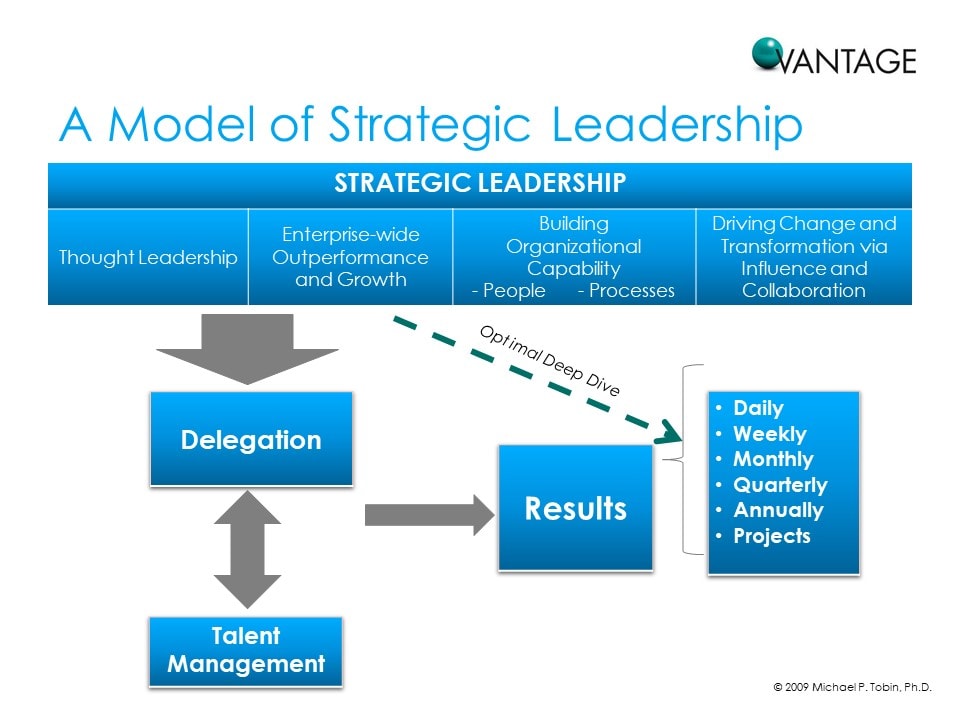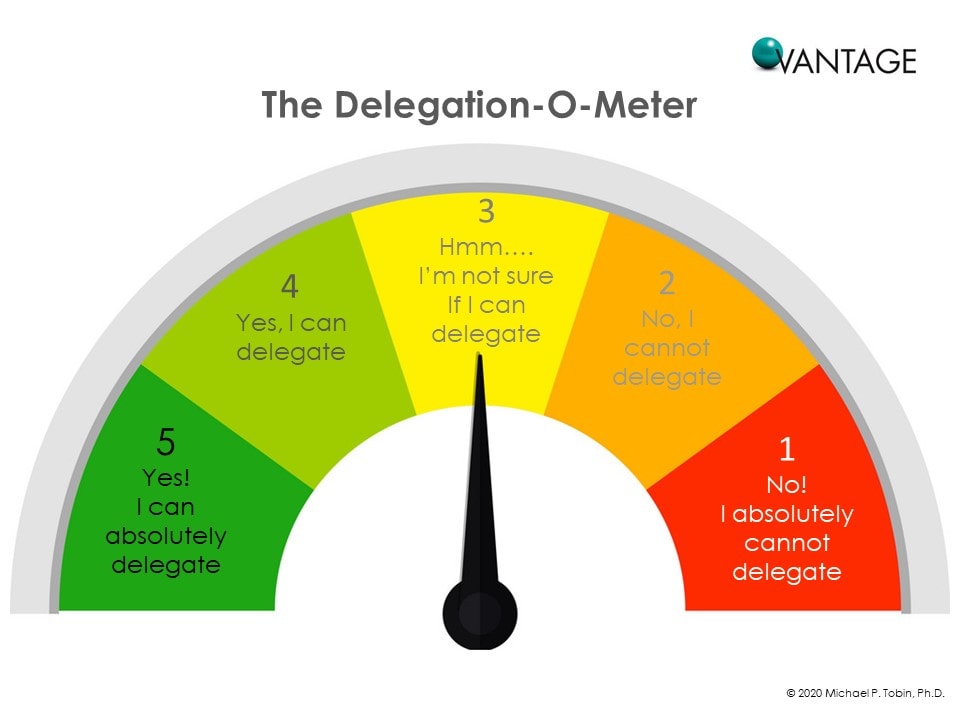Martin de Porres was one of the few people in this world who did not have to delegate. As a 15th-century Peruvian saint known to bilocate, he probably found existing in two places at once to be very helpful in knocking out his hagiographical to-do list.
Not everyone has that advantage. These days, executives must increasingly lead from a more strategic level while still assuring that near-term business plans get executed – and that the results are both high-quality and high-value. This is no small task; in fact, demands to lead from above while still delivering “from below” can seem an impossible juggling act. Moreover, the ever-increasing baseline expectations of customers – especially for innovation and speed – only amplify the challenges of leadership.
After all, business executives hold several key responsibilities, as reflected in our Strategic Leadership Model. Among them are:
- Providing thought leadership.
- Helping drive enterprise-wide extraordinary results and business growth.
- Building sustainable organizational capability in people and processes.
- Driving organizational transformation through influence and collaboration.
All this while delivering the week, the month, the quarter, etc. Who’s got the time?! Or bandwidth?! We believe it’s only possible to “be in two places at once” – that is, to allocate the time necessary for strategic leadership and still deliver the business results – through delegation to really strong teams.

As our model illustrates, the key to successful delegation is not the clarity with which the leader communicates performance goals, nor the cohesion of his/her/their team, nor the persuasion and motivation provided to the troops — though all of these are important, and can certainly improve the results. The real key to delegation is the TALENT of the team. The most important question facing the leader is: “Do you have the horses?” That is, do you have a team capable of consistently delivering a high level of value to your customers? A team capable of responding to the ever-changing competitive environment? If yes (Hallelujah!), then the executive should have the time to attend to the strategic aspects of their job while the talented team delivers on value. If the answer is no, however, then the leader will have to spend time compensating for the team. In that case, the leader must upgrade the talent on the team or likely underperform at the strategic level. Moreover, compensating for a not-strong-enough team can also inadvertently dilute the power that true delegation has for accelerating talent. Delegation, like promotion to a big job, is one of the most powerful development tools. The CEO literature is replete with anecdotes of talented individuals being “thrown in the deep end” and learning to swim in the waters of executive leadership.
The Delegation-O-Meter
Vantage has created a simple but effective tool to help leaders assess the strength of their team members – and therefore, get a read on the capability of the team to deliver at a high level, consistently. Below is our Delegation-O-Meter:

Its simplicity is its value. How CONFIDENT are you that you can delegate important work and decision-making to each member of the team? Top talent is identified by a rating of 4 or 5. The implications for 5’s are clear: this is your successor, or enterprise talent you should export elsewhere in the organization (i.e. make available for key leadership roles across the company). You should be taking more risks with them, accelerating their readiness to replace you or take on other leadership roles near-term. Team members rated as 4’s are key talent who likely “have runway.” Your job: give them more responsibilities and provide coaching and feedback to shape their success. 4’s and 5’s are clearly the difference makers for the company. We at Vantage have been impressed by how many of our customers need 4’s in every role on their teams, due to demands of their customers and the strength of their competitors. As one senior leader in a global packaging company told us: “The time when we can carry individuals whom we cannot delegate to is past…and it has been past for a few years.”
What, then, is to be done with direct reports rated 1 (“I am certain I cannot delegate anything really important to this person”); 2 (“I wish I could delegate to them, but I do not trust that it would be safe to do so”); or 3 (“I’m not sure whether or not I can delegate to this person”)? Our counsel is clear: manage out 1’s and 2’s as quickly and humanely as possible, and replace them with 4’s (or 5’s). Again, the CEO literature is filled with stories of regret that “I didn’t act quickly enough on certain individuals…” Each organization needs to manage the challenges of upgrading talent in its own culture, but clearly those who hesitate pay for it in terms of results and competitive capability. Persons rated 3 require a good deal of diligence from the leader. We recommend a period of intense coaching – no more than 6 months – in which you learn whether or not you can delegate to them by providing opportunities to take on responsibility and decision-making. Our experience suggests that frequent, consistent feedback is critical during this time for accelerated learning. In this way, individuals have the opportunity to “grow into a 4” and truly help the team deliver on its commitments.
Of course, talent assessment is a multi-faceted process, and building bench strength requires a thoughtful approach. But when you as a leader are faced with juggling both enterprise strategy and day-to-day deliverables, we have found our tool to be a very helpful, “quick and dirty” guide for developing teams who consistently deliver great results.
At least until you learn how to bilocate.
How do you decide when to delegate to your teams? When is it time to revisit team composition? Tell us in the comments below!

